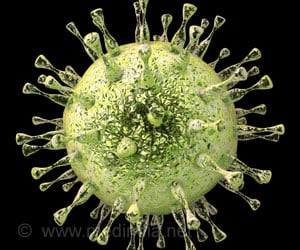- A common virus called cytomegalovirus (CMV) infects humans, then after a period of dormancy, can undergo reactivation
- CMV reactivation can lead to life-threatening complications, especially in persons with weak immune systems
- Bone marrow transplant patients are particularly susceptible to the harmful effects of CMV reactivation
The study was jointly led by Prof. Geoffrey R. Hill, MD, FRCPA, FRACP, and Prof. Mariapia Degli-Esposti, PhD.
Prof. Hill is Director of Hematopoietic Stem Cell Transplantation at the Fred Hutchinson Cancer Research Center, Seattle, USA. He is also a Senior Scientist in Bone Marrow Transplantation at the QIMR Berghofer Medical Research Institute, Brisbane, Australia.
Prof. Degli-Esposti is Head of Immunology Division and Head of Research at the Lions Eye Institute, Perth, Australia. She is also an NHMRC Principal Research Fellow and Head of the Experimental Immunology Group at the Center for Ophthalmology and Visual Science, University of Western Australia.
Read More..
What is Cytomegalovirus (CMV)?
CMV is similar to the Herpes virus, both of which belong to the Family Herpesviridae. CMV is a very common virus that infects humans and has 46 human strains. CMV infects people of all ages and by the age of 40 years, more than 50 percent of adults become infected. Once a person becomes infected with CMV, the virus remains in the body in a dormant state throughout life, but can undergo reactivation.Health Implications of CMV Infection
Although most CMV infections do not show any symptoms and signs, it can, however cause serious health problems for individuals with a weakened immune system. These can include complications in patients suffering from pneumonia, gastroenteritis, hepatitis, as well as in those undergoing allogeneic transplantation.The most common complication of bone marrow transplantation is CMV infection. As per data available from the Center for International Blood and Marrow Transplant Research, Wisconsin, USA, over 8,000 allogeneic bone marrow transplants were carried out in 2017 in the USA. These primarily involved blood cancer patients who had leukemia, lymphoma and other disorders of the blood.
In this regard, Hill says: “Most people don’t see any symptoms of the virus because their healthy immune systems keep CMV in check.” He adds:“But it can roar back to life in anyone with a compromised immune system, and the results can be life-threatening.”
Study Background
The present research is based on previous studies in which the focus was primarily on the T-cells of the immune system that fight various diseases. However, it slowly emerged that the B-cells of the immune system, which produce antibodies to fight microbial infections, could also play a role in fighting-off CMV infections. However, it appeared that the B-cells only played a supportive role. Clinical trials using antibodies to fight CMV didn’t yield any fruitful results. Moreover, these previous clinical trials used pooled sera from CMV-infected patients, as a result of which the strain-specific antibody response was absent.Study Procedure & Major Findings
The present study focused on the mechanism of CMV reactivation in patients undergoing bone marrow transplantation. In order to elucidate this mechanism, Hill and Degli-Esposti developed the first mouse model of CMV reactivation. The procedure and major findings are presented below:- Mice were injected with CMV and they developed the primary infection
- The virus then became dormant, in a similar way that occurs in humans
- The mice were given a bone marrow transplant after 3 months, which wiped out all the existing immune cells and replaced them with new cells derived from the bone marrow
- Other experiments revealed that B-cells played a crucial role in controlling CMV. It was observed that transplanted mice, which lacked pre-existing B-cells (and therefore, antibodies also) resulted in reactivation of CMV within 10 days
- Using 8 different CMV strains, it was found that mice injected with antibodies against the same strain that they were previously exposed to, were fully protected even after CMV was reactivated
Future Plans
The research team is trying to develop new therapies that will utilize antibodies obtained from CMV-exposed patients who are undergoing bone marrow transplantation. These antibodies would be purified and expanded in the lab and returned into these patients, who would subsequently be protected against future CMV infections. Clinical studies are underway to test the feasibility of this approach.Concluding Remarks
The study found that CMV strain-specific antibodies produced by B-cells suppress CMV in mice, without the aid of any other immune cells.“This is a big deal for the bone marrow transplantation field,” says Hill. “Our study shows for the first time that antibodies can play a dominant role in controlling CMV reactivation. This is turning dogma on its head.”
Funding Source
The study was funded by the National Health and Medical Council of Australia.Reference:
- Strain-specific Antibody Therapy Prevents Cytomegalovirus Reactivation after Transplantation - (http://science.sciencemag.org/content/363/6424/288)
Source-Medindia











